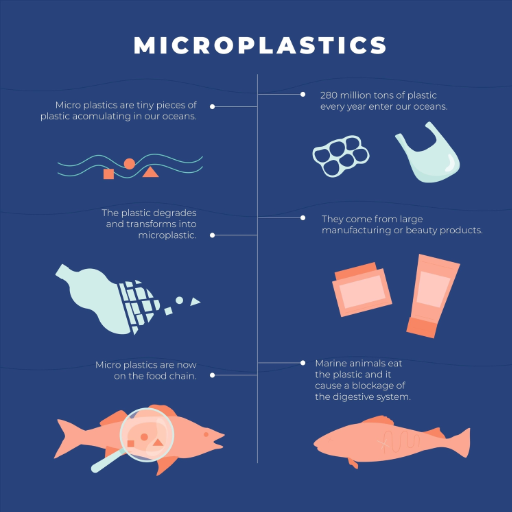The global plastic pollution crisis has evolved over the past years, and the majority of the public members have general information about the damage that the pollution has caused. Yet, many people are unaware of the pollution level in their everyday lives, just as in the case of food and drinks. Microplastics refer to miniature particles of plastic that are less than 5mm in size, and they can be found in plant and animal products, as well as air. Yet, how harmful is this to one’s health, and is there any way that we can limit the exposure? This text delves into pragmatic steps that aim to show you how to avoid eating microplastics and go a little further to take care of not only your present health but also your surroundings.
Understanding Microplastics and Their Sources
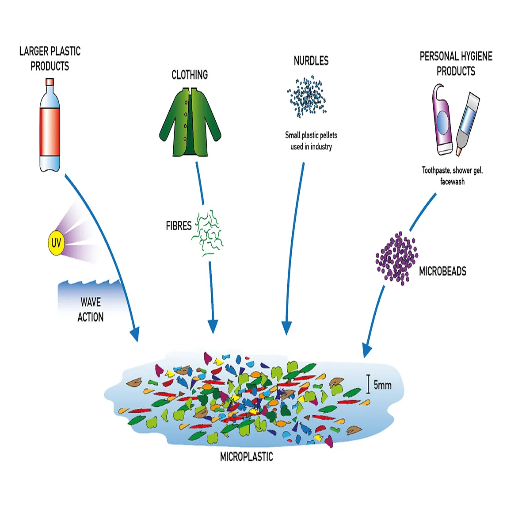
What Are Microplastics?
Microplastics measure less than five millimeters in size. As per their possible origin, they are broadly classified into two categories. Primary microplastics are manufactured in this minute size to be incorporated into products, including cosmetics, personal care items, and industrial abrasives. Conversely, secondary microplastics arise from the breakage of larger pieces of plastic, for instance, bottles, bags, and packaging, attributable to the Sun’s rays, heat, ocean currents, etc. These pieces of plastic today have become ubiquitous in the world’s ecosystems, permeating into soil, water, and even the atmosphere.
A primary concern about microplastics is their abundance in the environment and their possible bioaccumulation capability along the food chain. According to recent research, microplastics are found in fish and shellfish, salt, fruits, vegetables, and drinking water. For example, an investigation in 2022 revealed that humans can incorporate tens of thousands of such particles into their bodies annually. The potential health issues raised are an alert, as microplastics can carry toxic chemicals and interfere with biological processes. However, further research is required to know the long-term health implications of microplastics on humans at this stage.
Knowing about the sources and pathways of microplastics is essential in cutting down exposure. Other than ingestion or inhalation, the formation of microplastics is also considered a side effect of human activity, as it would wash away synthetic clothing or use personal-care products that contain exfoliating microbeads. When these sources are identified, individuals and policymakers can take further steps to minimize their presence in the environment. Together, a mix of regulation, awareness, and sustainable alternatives can help alleviate the effects of microplastics on generations to come.
How Microplastics Enter Our Food and Drinking Water
Through various sources and pathways within natural ecosystems and human activity, microplastics infiltrate our food and drinking water. Relevant to this are synthetic fibers, plastic pellets, and industrial microbeads that contaminate freshwater supplies as they flow through rivers, lakes, and reservoirs. While most wastewater treatment plants are equipped to remove contaminants, most cannot yet filter out microplastics, given their size. Without any barriers, these microscopic particles flow into the water bodies, into which aquatic organisms ingest, making them bioaccumulate along the food chain. Microplastics are commonly detected in fish and shellfish that aquatic organisms inhabit, with humans often ingesting them inadvertently during meals.
Further still, agricultural practices promote food contamination with microplastics. Applying treated sewage sludge as fertilizer allows plastic particles to go into soils, from where plants can take some, and others are drained into water sources through weighted runoff. It is worth mentioning that bottled water seems to be another major outlet for ingesting microplastics since particles are shed during its manufacture and packaging over time. The shocking finding from research reveals the existence of microplastics in tap water supplies worldwide; hence, the pressing need for improved filtration technologies and measures must be enacted to prevent further contamination.
The widespread condition of microplastics in the food and water supply has become a growing area of research as scientists strive to examine long-term health implications for humans. By following their pathways and tackling their sources, governments, industrialists, and consumers alike may come together to alleviate this hugely rampant concern and lessen the contaminants.
The Ubiquity of Microplastics: Are They Everywhere?
Microplastics are the plastic particles smaller than 5 mm that have managed to penetrate almost every working corner of the planet. These fragments are generated when larger pieces of plastic break down with time or are produced from microbeads and fibers utilized in consumer products such as cosmetics, clothing, and cleaning agents. Studies have revealed that microplastics are now in the oceans, rivers, soils, and even the air we breathe. They have somehow been detected in areas that used to be thought of as pristine, thereby underscoring the global spread of these pollutants, such as remote Arctic ice and untouched deep-sea sediments.
When the pollutants are this widespread, microplastics become a hazard to ecosystems and human life. It has, for some time now, been proven by a body of research that microplastics are in seafood, table salts, and even drinking water; this makes it nearly impossible for humans not to ingest them. Other recent studies point to microplastics in human blood and lungs, triggering fears that some microplastics might interact with tissues, preventing or disrupting biological processes. It may be another few years before a definite answer is reached after reviewing how microplastics affect biological processes; meanwhile, evidence indicates that microplastics can carry toxic substances like heavy metals and harmful chemicals, which might increase the health risks when a person inhales or ingests them.
Combating this far-extended contamination calls for a multifaceted strategy. Assuming microplastics to be pollutants, one might consider such strategies as enhancements in waste management, enactment of tighter regulations relating to plastics and their production and disposal, and the promotion of biodegradable alternatives. Raising the public’s conscience, which is half the battle, would help immensely: people can reduce their contribution by refusing single-use plastics and supporting products made from sustainable materials. This is a large-scale problem; therefore, it is only an international operation that can make an impact against this invisible threat to both environmental and human health.
Health Risks Associated with Microplastic Exposure
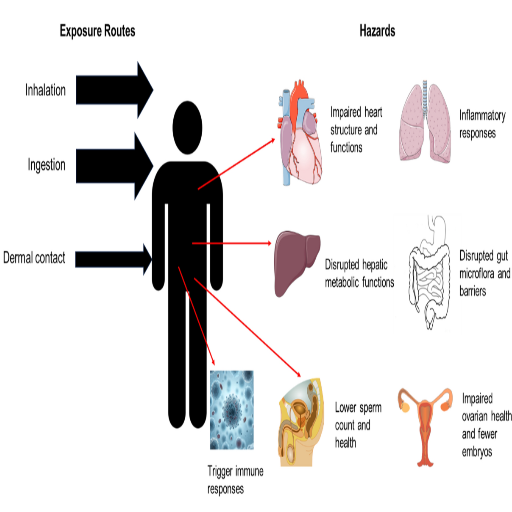
Potential Health Effects of Microplastics
Microplastics are of great concern due to their impact on organisms, including humans and other animals. Tiny particles, generally less than 5 millimeters in dimension, can discharge into human bodies through ingestion, inhalation, or dermal contact. It is considered that microplastics would also carry harmful chemicals such as phthalates, Bisphenol-A (BPA), and persistent organic pollutants (POPs) that interfere with hormone production, cause cancer, or impair the reproductive system. Once in the body, microplastics can accumulate and cause inflammation and other disorders or cellular damage because of the mechanical irritation they cause and the chemical contaminants attached.
An early finding suggested that microplastics can alter normal gut microbiota, leading to gastroenteritis or reduced immune responses. Microplastics have been found even in human blood, lungs, and placenta, which is ominous because it provides evidence of their pervasive existence and thus long-term health hazards. Extensive research is needed to fully assess the potential risk posed by microplastics. All this surely shows that microplastic pollution must be tackled immediately to preserve our environment and, by extension, human health.
Long-term Consequences of Consuming Microplastics
Ingestion of microplastics could pose long-term health risks arising from their chemical composition and potential for bioaccumulation inside the human body. Studies suggested that microplastics could carry harmful toxins such as pesticides or heavy metals that get attached to their surfaces. Once ingested, these contaminants may further increase toxicological risks, manifesting as inflammatory responses, oxidative stress, and the disruption of cellular functions. Presence of these microplastics inside the human digestive system may lead to disturbance in the absorption of nutrients and also affect the gut microbiota that plays a critical role in overall health.
A few reports show an increased probability of endocrine interference due to long-term exposure to microplastics since many contain nasty chemicals, bisphenols, and phthalates that mimic or inhibit hormone action. This interference over time could potentially be implicated in the causation of infertility, developmental disorders, and metabolic diseases such as diabetes or obesity. Moreover, laboratory results have revealed that microplastics may infiltrate organ tissues, affect vital systems, and generate inflammatory immune responses.
Due to the relative newness of this question, precisely determining the health effects remains an ongoing challenge, but mounting evidence underlines the urgent need to address and prevent microplastic pollution worldwide. Thus, protecting public health calls not only for further scientific investigations but also immediate actions aimed at reducing plastic production and upgrading waste management systems to lessen human exposure.
Recognizing Symptoms of Microplastic Exposure
Symptoms of microplastic exposure could still be on further study, but research lately points toward it being implicated in a variety of health issues. Microplastics could induce persistent abdominal discomfort, sensations, distension, or gastroenteric pains occasioned by interference with gut health and microbiota balance. Another possible symptom manifestation of inhaled airborne microplastics would be respiratory, such as coughing, shortness of breath, and airway irritation.
Emerging concerns are also being posed over systemic effects, including chronic-inflammation-inducing microplastics being present for an extended duration inside the system, with such inflammation contributing toward the risks of developing metabolic diseases and immune dysregulation. While the exact figures regarding symptomatology prevalence are scarce, these findings indicate the need to monitor microplastic exposure-related risk factors tightly. These can include diet, environmental setting, or occupation, to gain better insights into and control over the adverse implications on human health from microplastics.
Practical Ways to Avoid Microplastics in Your Daily Life
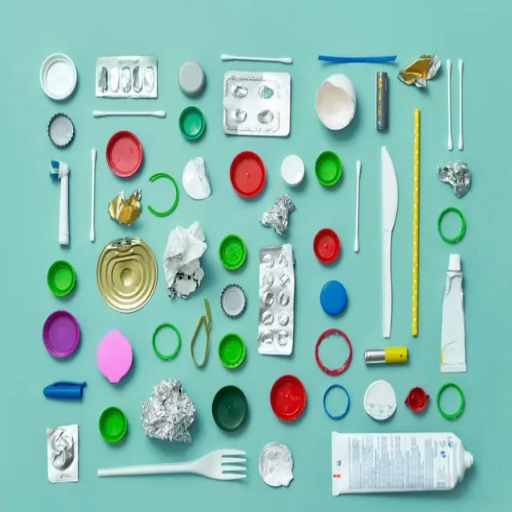
Choosing Plastic-Free Food and Drink Options
To avoid microplastic contamination through diet, one should choose plastic-free options when buying packaged products. Studies have confirmed that packaging materials leach microplastics into food, and sometimes, they travel with the beverage being served, more so when the food or beverage is heated or kept for a longer period. Packaging is banned for fresh produce if grown locally; hence, try to buy locally grown produce. Drying and storing food in stainless steel, glass, or silicone containers is an extra step to prevent microplastic uptake.
Single-use plastic, on the other hand, will always work against avoiding microplastic infusion, so it is advisable to refill tap water into glass or stainless steel bottles instead. Remember that many bottlings filled with microplastics may be purged in the leaf of a cup of tea, choose loose-leaf tea or uncoated paper tea bags, and brew freshly ground coffee using a reusable filter. These little changes, packed with enormous potential, can seriously minimize the everyday intake of microplastics and thus pave the way for a sustainable lifestyle.
Using Water Filters to Reduce Microplastics in Drinking Water
Water filters represent an effective microplastic reduction technique for drinking water, providing a practical solution to any household concerned with the issue. Advanced filtration technology, such as reverse osmosis, activated carbon, or nanofiltration, has proven efficient in eliminating microplastic particles from water. Studies show that reverse osmosis systems can remove 99% of microplastics, trapping them due to delicate membrane pores that do not allow small contaminants to pass. Activated carbon filters will also absorb impurities, depending on the microplastics and other harmful chemicals that contaminate drinking water.
When selecting a water filtration system, it is essential to consider its efficiency, maintenance demands, and capacity. Filter cartridges must be replaced regularly to ensure continued effectiveness, since clogged or worn-out ones might allow contaminants to pass through. Integrating water filters into one’s everyday life can drastically reduce microplastic exposure while benefiting one’s health and the environment.
Best Practices for Storing Food Without Plastic
If you’re investing in environment protection, one of the few ways through which you can contribute to the cause is by avoiding plastics in food storage. Glass containers certainly serve the job well, like jars and storage containers, just to name a few-that are sturdy, reusable, and safe for both hot and cold food. Beeswax wraps are another highly adaptable option for covering bowls or wrapping items such as bread and fruits. A metal tin or stainless steel container would be best for cereals, grains, or dried goods since they are airtight and keep products fresh. A couple of cloth bags made from cotton or linen would be perfect for purchasing and storing produce so that the produce can breathe with minimal environmental impact.
In refrigeration, silicone reusable bags for liquids or leftovers should be used; they work well in the freezer and are easy to clean. To maximize the storage life of some vegetables, wrap them in a damp cloth or tea towel to control moisture levels. Labeling these prematurely dated foods will help track freshness and prevent waste. Such small actions greatly lessen the reliance on plastics and promote healthy food storage options.
Shopping Tips for Reducing Microplastics
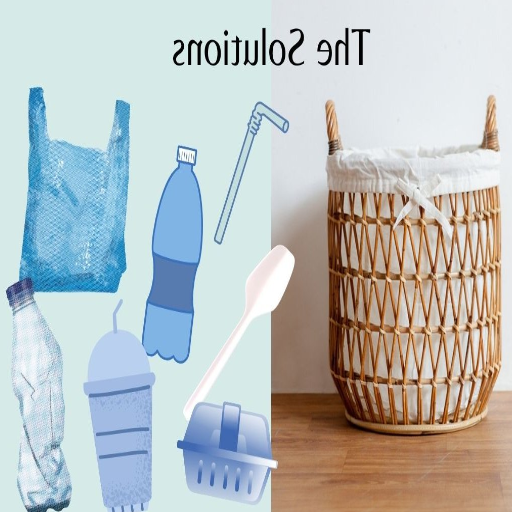
Selecting the Right Food Containers
Consider food containers made from sustainable and non-toxic materials such as glass, stainless steel, or silicone. Glass containers are usually sought-after for heavy-duty use; they do not stain and can withstand high temperatures for storage and reheating. They are reusable, recyclable, and never contain chemicals like BPA, meaning they can never leach microplastics, toxins, or any contaminants into the food. Stainless steel containers are typically lightweight and durable, and they often come with leak-proof seals, making them terrific for travel or packed meals. Silicone containers offer a flexible-type alternative, which stays soft and collapsible for easy storage; they are heat-resistant and safe for almost all food types.
Try to seek containers with the “food-grade” label, upholding products with certifications proving that they embrace health and safety standards. Invest in quality products that can cost more initially but will save you additional money over time, as you will not have to replace them as often. Do not use single-use plastic containers or containers of questionable composition, as these degrade over time, liberating extremely harmful microplastic particles into food and the environment. Being careful with what you choose as your containers will further your health and help the cause of ending plastic pollution and becoming an eco-warrior.
Avoiding Single-Use Plastics in Grocery Shopping
Cutting down on single-use plastic during grocery shopping is one phase of sustainability and minimization of environmental impact. Besides, one of the most efficient ways to tackle this is to carry your stock of reusable bags, baskets, or totes for grocery shopping. These options are sturdy, multipurpose, and can avoid plastic bags being dumped into landfill deposits or washed away into the ocean. Mesh or organic cotton-based produce bags provide an excellent solution for a few fruits and vegetables, with convenience attached. Stores nowadays encourage reusable bags by giving out small discounts or loyalty points.
Another crucial action is to buy as much as possible from bulk packs. Using bulk bins for grains, nuts, and spices gets rid of a lot of plastic packaging that usually comes along with the products. Buyers may actually offer their containers or use reusable bags for their bulk purchases, which reduces packaging waste. For perishable goods, it is always better to search for items packaged in biodegradable or compostable wrappers rather than conventional plastic packaging.
In addition, patronizing local farmers’ markets reduces dependence on plastic-packaged products: many vendors sell produce with little wrapping, thus encouraging fresher and seasonal food options. Learning about those stores that support sustainable practices or have refill stations for items such as cleaning solutions, oils, and even cosmetics can boost one’s efforts at reducing plastic use. Incorporating such conscientious buying habits into your lifestyle will benefit the environment and create demand for such eco-conscientious efforts in the retail industry, laying down the path for a greener future.
Identifying Brands Committed to Reducing Microplastics
Around the world, brands are taking critical steps to address the issue of microplastics, standing in commitment to sustainability and reducing environmental harm. Progressive companies research new procedures and materials that either eliminate or drastically reduce microplastics in their products. For example, many brands of personal care products are reformulating exfoliants and shampoos to replace plastic microbeads with natural biodegradable alternatives such as crushed apricot seeds, rice powder, or jojoba wax beads. The textile industry also considers using recycled and organic fibers to lessen the shear of synthetic particles during washing.
On the other hand, some businesses are investing in further technologies and partnerships to address this urgent issue. For example, several cleaning product manufacturers are not only battling to keep the microplastics away from their formulas. Still, they are also funding research on water filtration to capture microplastic particles before they reach the waterways. Packaging design is another side being altered, with brands opting for compostable or refillable options to lessen further microplastic distraction. By endorsing transparency through environmental certifications and detailed product labeling, these pioneering brands give power to consumers, enabling them to make informed and responsible ecological decisions. Supporting such endeavors sends an essential signal to industries about the demand for green culture and responsible protection of the planet.
Conclusion: Embracing a Lifestyle to Avoid Microplastics
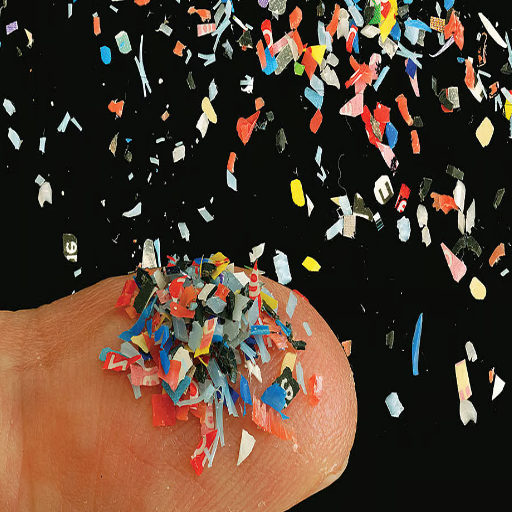
The Importance of Collective Action Against Plastic Pollution
Management of plastic pollution is a critical problem that needs collective efforts for a successful approach. I foretell that accepting this issue requires individual responsibility while combining their forces. At my level, I try to avoid single-use plastics; I will recycle wherever possible and buy from brands aligned with sustainability principles. But, of course, individual effort is never enough; hence, further change must find place at a higher level: stronger regulations and policies, and innovations that address plastic waste disposal globally. When governments, corporations, and communities collaborate, effective and lasting solutions result.
It requires collaboration because plastic pollution transcends borders, disturbing ecosystems, wildlife, and human beings on the ground. Together, we raise awareness, maximize resources, and lend our hands to strategy formation. Such a mixture of efforts may include cleansing disgrace from the land, supporting NGOs committed to conservation, or lobbying for better regulations. I am convinced that when we join forces and share a common goal, we can take meaningful steps toward reducing plastic pollution and protecting the planet for future generations.
Encouraging Others to Reduce Their Microplastic Exposure
The following are the changes I’ve made to those fine little things in my life with significant impact, and I encourage others to do the same. My number one priority has been using sustainable alternatives to single-use plastics, like reusable water bottles, grocery bags, and food storage containers. These small alternatives work hard to reduce plastic production, while also reducing their waste deposits into our environment. Microbead products are another set of products I go on the offensive against: while scrubs and toothpastes are standard options, I always read the label and opt for performance or natural alternatives.
I do the same when supporting a business or brand for its sustainability commitments. For instance, I opt for garments made from natural fibers instead of synthetic ones that shed microplastics when washed. I also use a washing bag or filter that traps microfibers when washing synthetic fabrics. Every decision counts, and when these actions are done together, they go a long way in killing microplastic pollution.
The last bit of effort to promote awareness within my community has been a painstaking pursuit. It may include anything from sharing the awareness with friends and family, nudging local businesses to go green, and participating in clean-up days. Spreading awareness is thus the most significant force. By making the changes and inspiring others to embark on similar paths, we, therefore, may be able to lessen our microplastic exposure, while protecting human health and the environment. We can spur change towards sustainable development by joining hands in this effort.
Reference Sources
- University of California, San Francisco: How to Limit Microplastics Dangers
- Washington University in St. Louis: Microplastics – Where They Are and How to Avoid Them
- Michigan State University: Mitigating Microplastics
- Stanford Medicine: Insights on Microplastics in the Body
- Rochester Institute of Technology: What Experts Want You to Know About Microplastics
- Top Suppliers in China
Frequently Asked Questions (FAQs)
How Do I Minimize the Contamination of Bottled Water by Microplastics?
To decrease exposure to microplastics found in water bottles, opting for filtered water rather than buying it from the store is relevant. The most recent research studies have shown that microplastics are present in bottled water and may leach from the packaging itself. Try to drink water from a glass or a ceramic recipient, which significantly reduces the chances of ingesting microplastics. Also, try not to keep refreshing water in plastic bottles and containers for more than a day, as this activity promotes the shedding of microplastics. If you must drink bottled water, always read the labels and choose water brands that prioritize high-quality, clean water free from microplastics.
Examining the Consequences of Intake of Microplastics in Food?
How serious are the problems of microplastics related to the ingestion of food? Microplastics in food systems have profound implications for both health and the environment. It is very common for microplastics to enter the food chain through various pathways. Processed foods are wrapped in plastic and end up on our plates. Eating such food causes us to ingest foreign objects, which are most likely to harm our health. Furthermore, the issue of microplastics remains a significant ecological concern, as it profoundly impacts various marine species and their respective habitats. Therefore, awareness of microplastic consumption linked to food will help reduce such ingestion.
How Can I Eliminate Plastic Containers from My Kitchen?
You can replace plastic containers with glass or earthenware options in the kitchen. There will be fewer microplastics in such devices, and there will be no possibility of chemicals coming out on the food while it is being stored. Avoid purchasing goods that come in excessive packaging and opt for more traditional, unadulterated goods over modified, commonly plastic-wrapped ones. Additionally, when preparing a meal, it is recommended to use a wooden or bamboo chopping board instead of a plastic one, as the latter is more prone to the release of microplastic materials. One can observe a significant reduction in plastic food exposure in these small ways.
Is there food that contains any microplastics?
Indeed, some products are at greater risk of being contaminated with microplastics, specifically sushi and other processed foods that are mostly packed inside plastic. There are several means of introducing microplastics into food, including inhalation of water and air. For instance, fish and crustaceans have been exposed to plastic particles in the water, so their bodies absorb such particles. Additionally, processed foods enclosed in polystyrene or plastic may have varying degrees of microplastics. To minimize exposure, opt for organic products and those wrapped in eco-friendly packaging, rather than plastic.
How does the use of a microwave affect the level of microplastics in food?
Heating food in plastic containers using a microwave can contribute to the presence of microplastics in food. When plastic containers are heated, they might become angulated and emit plastic and other contaminants into the food. Instead, opt for microwave-safe glass or ceramic, as they avoid the use of plastic when heating the food. Moreover, using plastic covers in the microwave can cause more harm than good, as they melt and form microplastic particles; therefore, caution should be exercised. Instead, choose less hazardous materials with fewer microplastics incorporated into one’s diet.

